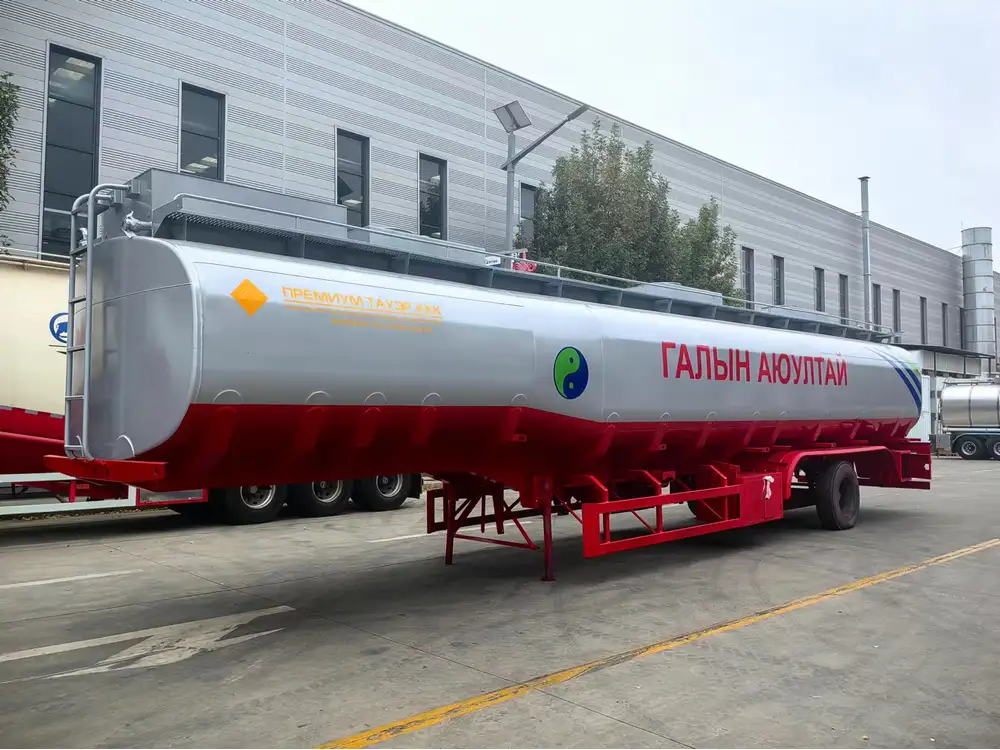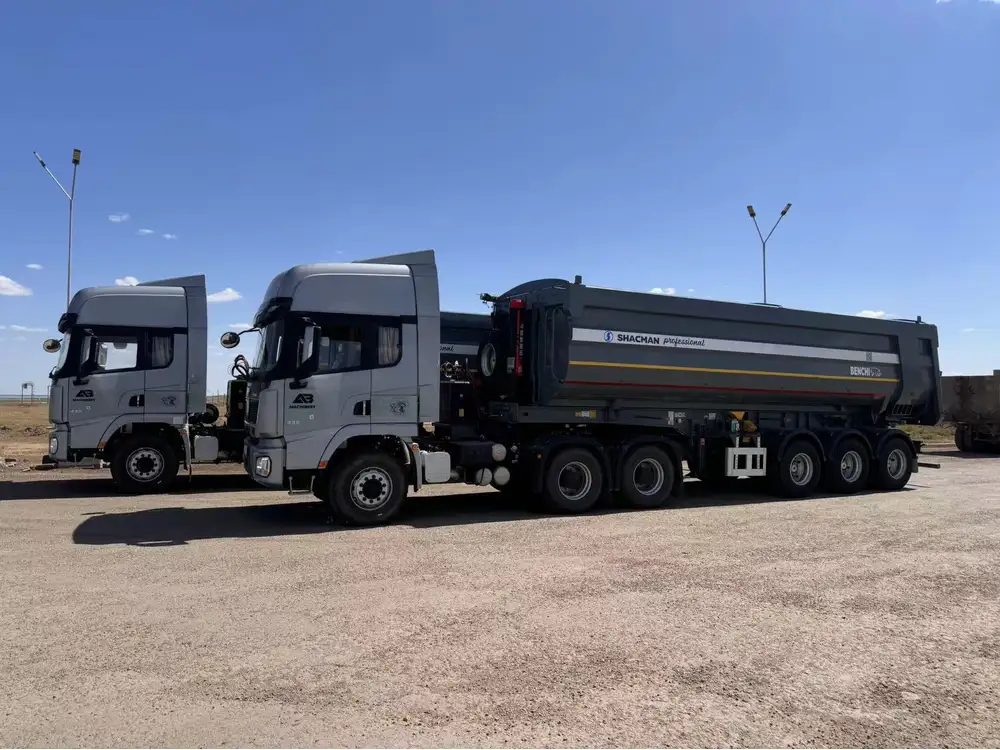When it comes to transporting materials like dirt, gravel, or construction debris, dump trailers have risen to prominence in various industries. Understanding how much dirt a dump trailer can hold is crucial for both commercial and personal projects. This guide will comprehensively break down the factors influencing capacity, provide estimates based on different dump trailer sizes, and cover practical considerations for optimal usage.
Understanding Dump Trailer Capacities
Common Capacities of Dump Trailers
Dump trailers come in various sizes and designs, affecting their hauling capabilities. Here’s a simplified table that illustrates the general capacities based on standard dump trailer dimensions:
| Trailer Size (in cubic yards) | Approximate Weight Limit (in tons) | Typical Uses |
|---|---|---|
| 1 – 2 cubic yards | 1 – 2 tons | Residential landscaping |
| 3 – 4 cubic yards | 2 – 4 tons | Small construction projects |
| 5 – 6 cubic yards | 4 – 8 tons | Medium-scale construction |
| 7 – 10 cubic yards | 10 – 15 tons | Landscaping, large demolition jobs |
| 10+ cubic yards | 15+ tons | Heavy-duty commercial purposes |

Factors Affecting Capacity
- Size of the Trailer: The most direct influence on capacity is the physical size of the dump trailer, typically measured in cubic yards.
- Tare Weight: This refers to the weight of the trailer itself. The payload capacity must account for this weight to avoid overloading.
- Material Density: Different materials have varying densities. For instance, topsoil is less dense than gravel, which affects how much can be loaded.
- Trailer Design: A gooseneck trailer vs. a bumper-pull trailer can have different weight distributions, affecting how much weight can be safely transported.
Estimating Capacity by Material Type
Different materials have distinct weights and volumes. Here’s a breakdown of how much dirt a dump trailer can carry based on various materials:
Weight of Common Materials
| Material | Weight per Cubic Yard (Approximate) | Capacity for 5-Yard Trailer |
|---|---|---|
| Topsoil | 1,200 lbs | 6,000 lbs (3 tons) |
| Sand | 2,700 lbs | 13,500 lbs (6.75 tons) |
| Gravel | 2,500 lbs | 12,500 lbs (6.25 tons) |
| Concrete (broken) | 3,000 lbs | 15,000 lbs (7.5 tons) |
| Excavation Soil | 1,800 lbs | 9,000 lbs (4.5 tons) |
Using the above information, we can determine how much of a specific material can be transported based on the type of dump trailer. For example, if you have a standard 5-cubic yard dump trailer and load it with topsoil, you’re looking at about 6,000 pounds of total capacity.

Practical Calculation Example
If you were to choose a 10-yard dump trailer, your calculations would unfold as follows:
- Determine the Material Type: For gravel, figure on 2,500 lbs per cubic yard.
- Calculate the Total Weight:
- (10 \text{ cubic yards} \times 2,500 \text{ lbs} = 25,000 \text{ lbs})
This indicates that a 10-cubic yard dump trailer fully loaded with gravel would exceed the capacity of most standard trucks. Hence, awareness of your vehicle’s limitations is imperative.
Optimal Use of Dump Trailers
Load Distribution
Correct load distribution maximizes efficiency and safety while minimizing wear and tear on the trailer and vehicle. Aim for a balanced load to ensure that both the towing vehicle and trailer handle effectively. For instance:
- Ensure an even spread across the bed.
- Avoid stacking materials too high, which can negatively impact trailer stability.

Weight Limits and Regulations
Knowing local laws concerning weight limits is fundamental. Many states have specific regulations on how much weight can be transported without requiring special permits. Be mindful of the following:
- Overload Risks: Exceeding legal weight limits can lead to fines, accidents, and damage to public roadways.
- Trailer Capacity: Adhere strictly to the manufacturer’s specified weight capacities.
Troubleshooting Common Issues with Dump Trailers
Flat Tires
A common issue for dump trailer users is flat tires, often caused due to overloading or inadequate tire maintenance.
- Regularly inspect tire pressure and tread.
- Use appropriate load limits to prevent blowouts.

Unloading Difficulties
If you find yourself struggling to unload, consider these tips:
- Check Hydraulics: Ensure hydraulic systems are functioning properly.
- Level Ground: Always park on level ground before unloading to prevent tipping.
Maintenance and Licensing
Regular maintenance extends the lifespan of your dump trailer. Common maintenance tasks include:
- Tire Checks: Regular inspections for any wear or damage.
- Hydraulic System: Ensure all fluids are topped off and without leaks.
- Brake Systems: Check that brakes function correctly and at appropriate intervals.
Understanding Your Needs Before Purchasing a Dump Trailer

Assessing Your Requirements
Before deciding on a dump trailer, assess your specific needs. Consider the following factors:
- Frequency of Use: If you plan to use the trailer regularly, investing in a durable, high-capacity model is advisable.
- Types of Material: Knowing the materials you’ll be hauling can influence your choice of size and type.
- Budget Constraints: Assess your budget not just for the purchase, but also for maintenance and insurance.
Comparison Shopping
When selecting a dump trailer, it’s wise to do your research. Here are a few comparisons to guide you:
| Feature | Standard Bumper-Pull Dump Trailer | Gooseneck Dump Trailer |
|---|---|---|
| Capacity Range | 5 – 10 cubic yards | 10 – 20+ cubic yards |
| Ease of Maneuverability | More difficult due to weight distribution | Easier turning and stability |
| Price Range | Generally cheaper | Higher cost due to larger capacity |
| Towing Requirement | Standard hitch | Requires a heavier-duty hitch |
Conclusion: Making an Informed Decision
Selecting the right dump trailer will enhance your project efficiency and save costs in the long run. Whether you’re an individual contractor or a commercial entity, understanding the specifics of how much dirt your dump trailer can hold, and selecting a model that fits your needs will prove invaluable.
As you move forward, always prioritize the intended use, understand the limitations imposed by your vehicle, and consider the intricacies of material weight and density. Engaging with your local dealer or manufacturer can also provide additional insights tailored for your region’s regulations and material handling practices.



